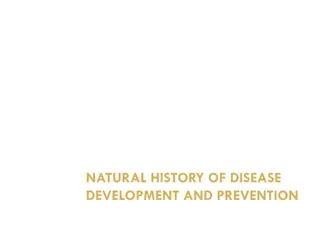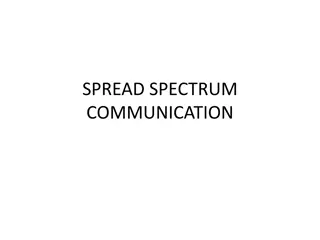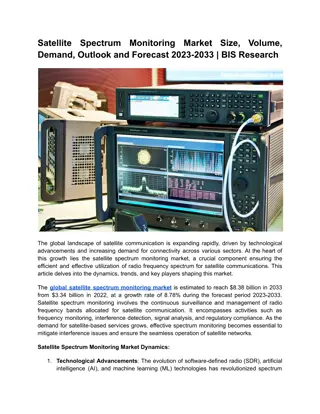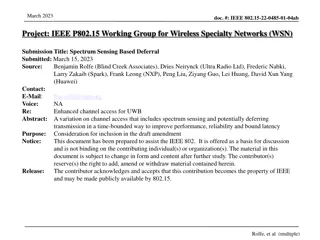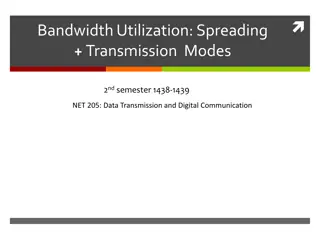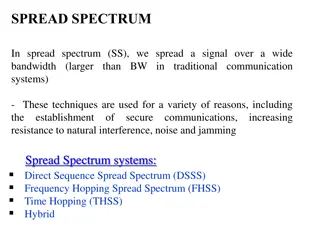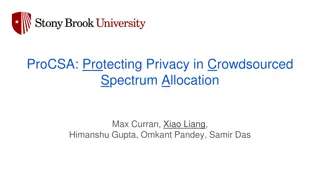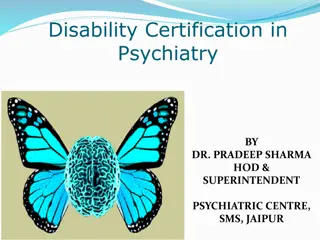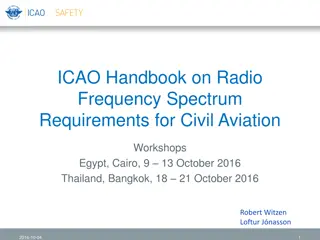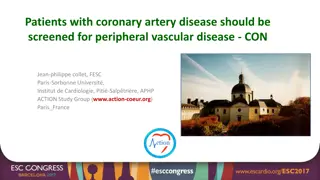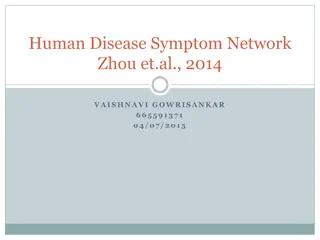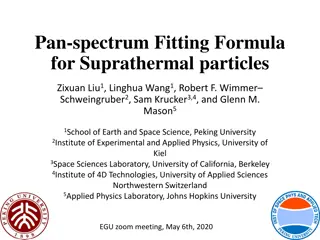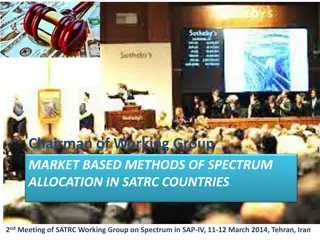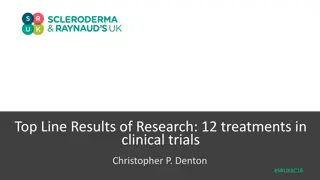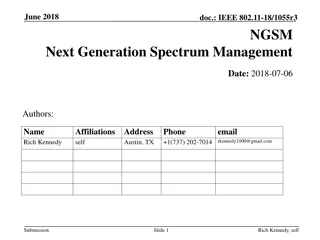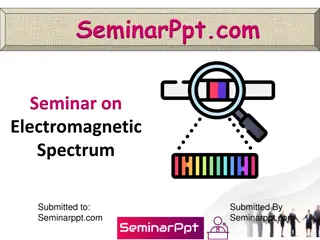Scleroderma Spectrum Diseases
Scleroderma spectrum diseases are a rare group of heterogeneous conditions with significant morbidity and mortality. Systemic Sclerosis (SSc) is characterized by skin thickening, vasculopathy, and autoantibody production. The disease has different types based on cutaneous involvement, each with distinct prognoses and complications. Organ involvement in SSc is complex, requiring regular evaluation and tailored treatment strategies.
Download Presentation

Please find below an Image/Link to download the presentation.
The content on the website is provided AS IS for your information and personal use only. It may not be sold, licensed, or shared on other websites without obtaining consent from the author.If you encounter any issues during the download, it is possible that the publisher has removed the file from their server.
You are allowed to download the files provided on this website for personal or commercial use, subject to the condition that they are used lawfully. All files are the property of their respective owners.
The content on the website is provided AS IS for your information and personal use only. It may not be sold, licensed, or shared on other websites without obtaining consent from the author.
E N D
Presentation Transcript
SCLERODERMA SPECTRUM DISEASE Mohammed A. Omair MBBS, SF Rheum Consultant Rheumatologist Assistant Professor King Saud University President of the Charitable Association for Rheumatic Diseases
Agenda Background Scleroderma Sjogren s Syndrome Inflammatory Myopathies
Background Scleroderma spectrum diseases are a group of heterogeneous diseases that has a predominant feature and share other common features. They are rare. Difficult to treat. Associated with significant morbidity and mortality.
SSc SSc is characterized by skin thickening, vasculopathy and autoantibody production.
Types Based on cutaneous involvement, it is classified to diffuse and limited. Diffuse disease is associated with more internal organ involvement, Anti-topoisomerase/RNA polymerase III antibodies and a worse prognosis. Limited form is often more indolent, has a higher risk of pulmonary hypertension, and anti-centromere antibodies
Autoantibodies Scl-70 (topoisomerase): is associated with diffuse subset, ILD, and reduced risk of PAH. Anti-centromere: limited subset, PAH and DU. RNA polymerase III: associated with SRC, malignancy associated SSc, and mortality. Scl-PM: associated with myositis overlap.
2013 Criteria for the Classification of Systemic Sclerosis
Organ Involvement in SSc SSc is a disease that is difficult to evaluate, treat, and monitor (why is that ?) It is very heterogeneous Usually diagnosed late Pathogenesis in each organ involved is not the same (Neurovascular/fibroproliferative/inflammatory). There is no single drug that treats everything A strategy should be adopted to evaluate each manifestation and organ involved on a regular basis.
Skin the Largest and Most Important Organ in SSc (and all women)
Skin Involvement Skin involvement has been considered a reflection of internal organ involvement. The level of skin involvement predicts severe disease and mortality. Skin loosening occurs 5 years after the onset of the disease. Treatment is usually initiated when active skin inflammation is apparent or progressive skin thickening.
Skin Involvement SKIN INVOLVEMENT ALWAYS STARTS IN THE FINGERS AND TOES AND EXTENDS PROXIMALLY. Contractures of the fingers and disability are preventable with stretching exercise. Patients should be advised to use emollients and creams at all time.
Treatment of skin involvement Methotrexate (if no ILD or renal failure) Mycophenolate mofetil Cyclophosphamide Rituximab With some steroids
Raynauds Phenomenon and Digital Ulcers (Pain at the tip of your fingers)
Raynauds Phenomenon (RP) and Digital Ulcers (DU) RP and DU are 2 faces of the same coin. There is some difference between the underlying pathogenesis of both conditions. 95% and 50% of SSc have RP and DU respectively, but RP tends to occur years before the diagnosis of SSc unlike DU that usually occur in the first 5 years after the development of the non-RP manifestation.
Treatment Modalities in Secondary RP Never underestimate non-pharmacological treatment. Treat pain adequately. Calcium channel blockers are effective in treating RP with the cost of side effects and intolerance. Prazocin not working well. Efficacy of oral and IV prostaglandins. IV iloprost better than nifedipine.
Treatment of DU Aim of treatment includes: healing and prevention of new ulcers at the end of the study. Calcium channel blockers are commonly used but no evidence in healing DU Endothelin receptor antagonist (bosentan) has been shown to prevent new ulcers and is believed to be a disease modifying agent for SSc Phosphodiesterase inhibitors has a positive effect on healing and preventing ulcers. Prostacyclin has been shown to heal DU and prevent new ulcers.
ILD ILD: is defined as a specific form of chronic, progressive fibrosing interstitial pneumonia leading to progressive loss of pulmonary function, and respiratory failure. Who should be screened for ILD: EVERYBODY It affects usually the bases of the lungs. Diagnosis is made by a combination of imaging and pulmonary function test (PFT).
PFT in ILD Clinical findings in ILD: - Tachypnea - Tachycardia - Cyanosis - Clubbing - Reduced chest expansion - Fine early inspiratory crackles PFT in ILD shows - Low forced vital capacity (FVC) - Low forced expiratory volume in one second (FEV1) - Normal or high FVC/FEV1 ratio - Low diffusion capacity of carbon monoxide (DLCO)
Treatment Options Cyclophosphamide is up to today the standard of care used as treatment induction in ILD. Alternative could be: MMF or rituximab. Maintenance includes: MMF, AZA and RTX. Steroids are a part of induction and maintenance.
PAH in SSc PAH is defined as PAP 25mmHg with a pulmonary wedge pressure 15 mmHg. PAH has become a very important cause of mortality along with ILD they are the cause of 33% of death. Affects 8-13% of SSc (RHC criteria) PAH
Solutions to Reduce PAH-related Mortality and Morbidity Early Detection Aggressive treatment Early Referral for lung transplant
How to diagnose PAH in SSc Clinical findings include: Desaturation Tachycardia Palpable P2 and parasternal heave Loud 2nd heart sound Signs of right sided heart failure The first investigation to order is echocardiography. PFT may show isolated low DLCO The gold diagnostic tool is right sided heart catheterization.
Remember you can have pulmonary hypertension secondary to ILD which makes diagnosis and management more complex.
Treatment of PAH Endothelin Receptor Antagonists: - Bosentan - Ambrisentan - Macitentan Phosphodiestrase Inhibitors Prostacyclins
GIT Involvement GIT is the most common internal organ to be involved (95-99%). It affects the whole tract: - Esophagus: dysmotility and reflux leading to strictures - Stomach: gasrtoparesis, watermelon appearance with telagectasia. - Treatment of both includes: lifestyle modification, proton pump inhibitors and iron deficiency anemia treatment.
GIT Involvement - Small bowel: blind loop syndrome complicated by bacterial overgrowth manifesting as chronic diarrhea and malabsorption. - Primary treatment is sequential antibiotics but stomas and TPN can be offered in advanced case . - Large bowel: chronic constipation, fish mouth diverticulae. - Treatment includes laxatives - Anorectal: fecal incontinence is a devastating complication and difficult to manage but one option could be to clear bowel frequently before going out.
Scleroderma Renal Crisis Patients with SSc usually have low BP, once you see high BP suspect SRC. The primary histopathologic changes in the kidney are localized in the small arcuate and interlobular arteries and the glomeruli. The characteristic finding is intimal proliferation and thickening that leads to narrowing and obliteration of the vascular lumen, with concentric "onion-skin" hypertrophy. This will lead to activation of the aldosterone-renin-angiotensin pathway. Precipitating factors include: high dose steroids, cyclosporin, pregnancy. Anemia in SSc is usually iron deficiency, once you see microangiopathic hemolytic anemia suspect SRC.
Clinical and Lab Findings Any new onset HTN with a BP of >150/85 or 20mmHg increase from baseline is critical to recognize. Normotensive renal crisis can occur Urinalysis might show proteinuria and hematuria but no RBC cast. High creatinine is almost universal Anemia with positive hemolytic workup points to microangipathic hemolytic anemia
Treatment Treatment is control of BP by reducing it 10mmHg every 24 hours Best (and only) drug Angiotensin Converting Enzyme Inhibitors Even if progress to ESKD 40% might recover and get back to near normal function.
Other manifestations Cardiac: Myocardial fibrosis leading to conduction abnormalities, cardiomyopathy, and accelerated coronary artery disease. Arthritis: similar to RA with erosions and joint destruction. Myositis: manifested by weakness with no pain and high muscle enzymes.
SS is a systemic chronic inflammatory disorder characterized by lymphocytic infiltrates in exocrine organs. Most individuals with Sj gren s syndrome present with sicca symptoms, such as: - Xerophthalmia (dry eyes) - Xerostomia (dry mouth) - Vaginal dryness - Parotid gland enlargement
Criteria of SS Diagnosis of primary SS requires at least 4 of the criteria listed below (you must have 5 or 6): 1. Ocular dryness 2. Oral dyness 3. Ocular signs (Schirmer test) 4. Oral signs (sialogram, scintigraphy or sialometry findings) 5. Positive minor salivary gland biopsy findings 6. Positive anti SSA or anti SSB antibody results
Treatment of glandular manifestations Oral hygiene Avoid sugars Florid products Parasympathomimetics (pilocarpine) Artificial eye and mouth moisturizers Creams and lotions Vaginal lubricants
Extra-glandular manifestations of SS Arthritis Myositis Pancytopenia Palpable purpura ILD Demyelinating disease Renal tubular acidosis type 1 Interstitial nephritis Fatigue
Treatment of extra-glandular manifestations Treatment of all include immunosuppressive agents: Steroids MTX (except for ILD) Azathioprine Cyclophosphamide Rituxmiab For RTA you just need to give NaHCO3
Complications SS patients are at risk of developing lymphoma 20 times more than the general population Look for persistent LAP or disappearance of RF
IIM Are a group of autoimmune myopathies that are characterized by muscle weakness mainly in the proximal muscles. It is insidious and progressive. Pharyngeal muscle involvement can present as dysphagia and can lead to aspiration pneumonia. Chest wall weakness can present as dyspnea and lead to type II respiratory failure. Can affect the heart and lead to cardiomyopathy
Types of IIM Primary idiopathic polymyositis (PM) Primary idiopathic dermatomyositis (DM) III. Polymyositis or dermatomyositis associated with malignancy IV. Childhood polymyositis or dermatomyositis V. Polymyositis or dermatomyositis associated with another connective-tissue disease VI. Inclusion body myositis VII. Miscellaneous (eg, eosinophilic myositis, myositis ossificans, focal myositis, giant cell myositis) I. II.
Rashes of DM Photosensitivity Heliotrope rash Gottron s papules/sign Shawl rash Erythroderma
Investigation Muscle enzymes CK LD AST ALT Aldolase Anti-Jo1 antibody MRI muscle: showing muscle edema Muscle biopsy: lymphocytic infiltration EMG: myopathic changes MOST IMPORTANT: RULE OUT OTHER CAUSES OF MYOPATHIES.
Extra-muscular manifestations Arthritis RP ILD (antisynthetase syndrome)


